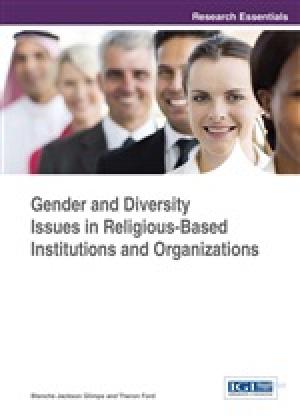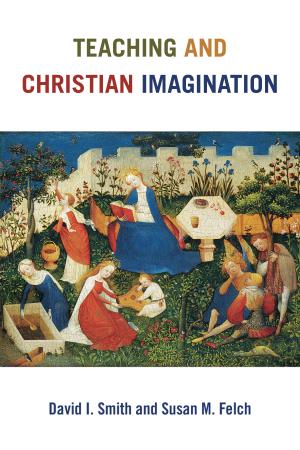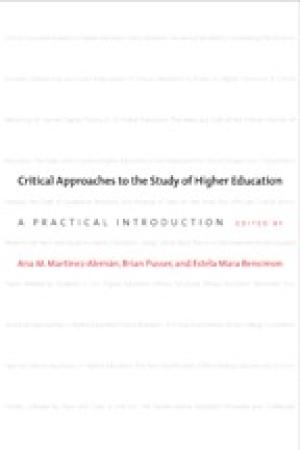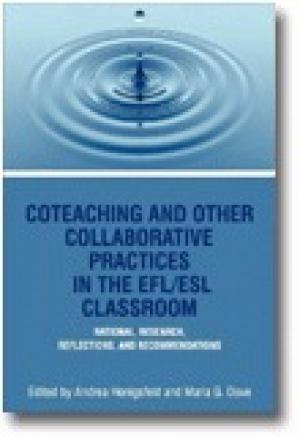Resources by Aliou C. Niang

Gender and Diversity Issues in Religious-Based Institutions and Organizations offers a chilling reminder that much remains to be done to educate people on race, gender, and diversity. Blanche Jackson Glimps and Theron Ford craft a goldmine filled with breathtaking essays insisting that schools, institutions, and organizations cannot afford a wait-and-see attitude hoping that these issues will somehow work themselves out. They argue that education to inspire intentional acts to diversify is quintessential. This is accomplished in thirteen chapters written with a national and international scope by concerned experts who agree that although progress is being made in the areas of gender, race, and diversity, many people still feel alienated. For this, the authors marshall copiously documented arguments that expose relational problems in many religious schools, institutions, and organizations around the world. A dense annotation of each chapter is implemented with meticulous summaries and abstracts to offer a clear layout of the entire book. Readers are graciously guided to address a timely need while also given actionable solutions to these nagging issues and further recommendations on helpful publications to consult. In the end, what Glimps and Ford offer is a timely well-written encyclopedic work not just for socially and religiously engaged teachers and leaders but for any caring person willing to make a difference in human relationships for many years to come. As an African scholar teaching in the United States, I am particularly struck by Sheri Young’s “Psychological Essentialism” (80-123). Aspects of her argument permeate the entire book in many ways. She explores how religious institutions handle diversity matters and wonders if “there is a benefit to being ‘essentialized’ versus ‘essentializing’ others?” (84). In other words, do religious and social institutions have a good grasp on how to diversify their spaces? Case studies suggest that this is hardly the case. To essentialize self or someone else, she avers, has little if no benefit at all. To deal with psychological essentialism, religious and social institutions must own up to their stated mission goals because most of them “have an institutional mission statement that includes a goal to develop individuals who stand with, and serve, their fellow human beings” and “hold a view of education that includes promoting education that does justice, as faith does justice.” Exercising this noble mission by avoiding the biases that transform religiosity into wars about hierarchy and superiority, while upholding messages of faith, hope, and equality, religious institutions are better prepared to create positive changes to develop positive campus climates than religious institutions that are held in place by waging outdated superiority wars. (114) In many ways, the contributors to this volume testify to the fact that ours is anything but a postracial or gender sensitive world, even in religious circles. Racial and gender objectification is a daily experience for many people around the globe. A resilient hope runs through the book that well-meaning religious educators and leaders inspired by their mission statements will strive to reclaim their confessed commitments and goals to do the right thing by exercising genuine gender diversity, justice, and equality. This book is long overdue and should be read, studied, and its content applied in every institution, school, and social organization worthy of its socioreligious commitment to the betterment of human interrelationships for a foreseeable and lasting future.

David I. Smith and Susan M. Felch remind their readers that they are offering “not a ‘how-to’ manual or collection of tips” but “lenses . . . opening possibilities” for effective “learning and teaching” (2). Teaching is not a transaction to dispense knowledge but a multivalent art that should not be reduced to gimmicks. As Smith and Felch conceive of it, teaching is a living process shaped by the imagination of both teacher and student – an experience directed by “visions, not just beliefs and techniques” (1). It is an organic life shaped by theological journeying, farming, and building metaphors. To bolster their argument, Smith and Felch carry their readers through a three-dimensional rubric that reimagines teaching as a biblical hermeneutic – a teaching life that undulates between “journeys and pilgrimages,” “gardens and wildernesses,” and “buildings and walls.” Reading this book as a teacher, I was drawn into the teaching world the authors invite all instructors to enter – it is a world where one hears, sees, thinks, and reimagines inexhaustible possibilities of shaping minds. The authors draw examples from biblical characters and Christian leaders to illustrate the multifaceted and meandrous journey each of their teaching metaphors conveys. First as pilgrim, the teacher is advised to rely on God, the divine GPS, for the journey (84) – an act that includes rest but does not preclude imagination on the part of the pilgrim. Second, insights and actionable ideas are not caught in vacuum. They are caught in surprising places like gardens, deserts, and classrooms where both teacher and students, like the first humans and liberated communities (Gen 1-3; Exod 1:1-15:27), learned to rethink, develop new perceptions, and take new steps as they journeyed with God. Third, edifices and walls speak about the role and construction of space. Though both building and walls may have a positive role as a course syllabus might (168), one is reminded that spaces delineated by the twin metaphor, buildings and walls, are often vigorously contested in the Bible, as is evidenced in the Household Codes (Eph 5:11-6:11; Col 3:18-4:1; 1 Peter 2:13-3:33) – a reality that did much to reduce many women to a subservient status and silence in the church to this day. As a Senegalese transnational biblical scholar shaped by African, Islamic, and Christian faith traditions, I find the journeying, farming, and building metaphors that Smith and Felch apply to teaching in not just Christian, but in every faith tradition. In spite of my reservations about limiting such powerful metaphors to only the Christian imagination, this book makes an invaluable contribution for educators. I agree with Smith and Felch, that Teaching and Christian Imagination is indeed an invitation to focus on what kind of person (and therefore what kind of teacher) we are gradually becoming and the place our vision of the world plays in the process . . . to wonder what teaching and learning might look like by those who know that they live in a world created by God who has filled it with beauty and story and song and who talks with us through the vale of tears and draws us toward future glory. (206) Put differently, Christian educators, and I would add all instructors of any discipline, are invited to take seriously their function as learners and teachers whose growth is inextricably bound to the growth of those they teach. In spite of my minor objection, this book should be in the library or office of any serious teacher, educator, or leader committed to the future of humanity.

The goal of the contributors to Critical Approaches to the Study of Higher Education is to apply critical theories to the study of higher education which, they insist, “has only begun to develop research using such essential approaches as critical feminist theories, critical race theories, critical discourse analysis, state theoretical approaches, or theories of power and marginalization.” Added to this genuine concern is the scarcity of published material “addressing key topics in higher education that are central to critical work elsewhere in the social sciences” (5). To meet this need, they marshal “critical theories, models, and research tools with a critical vision of the central challenges facing postsecondary researchers” hoping to shape future “scholars and scholarship in higher education” (5). They are convinced that these critical tools will “provide policymakers, the public, and institutional actors clear, reasonable, and authoritative information about higher education as it is experienced in a democracy” (1). The result is a fine compilation of well-written essays for teachers and researchers to adopt and exercise their critical edge with a view to innovating their teaching pedagogies and research. The vision Mertínez-Ahlemán, Pusser, and Bensimon have is to ensure a sustained exercise of critical theory in the service of humanity, namely “for understanding politics and policy making in higher education” (5). They carry their readers through fifteen intriguing arguments critically testing theory against lived experiences filled with autobiographical elements that share the same thread – an abiding concern and determination to ensure that justice and equity are exercised in higher education. After all, critical theory came into being for this purpose as exemplified in feminist criticism, critical race theory, and other critical studies dealing with various dimensions of human life such as marginalization, economic disparity, and power differential. Simply stated, things are not the way they seem and something must be done even if it might be subversive. This volume is, indeed, “long overdue” (5) as it provides salient insights on how to critically navigate the host of complex and challenging issues facing higher education. These dynamic tensions inherent in higher education include: areas of scholarship and lived experience, power differential, critical historiography, the making of globalization, policymaking, race, equity, opportunities, and institutional change, and so on. Quite frankly, this book is a gem with a delicate vision to motivate scholars and teachers alike to engage in the noble – yet difficult – task of effecting change, especially the kind of transformation that advocates justice and nurtures equity in higher education. Educators and researchers may strive to embody and diligently exercise its content in their classrooms or writing projects because of its timely and urgent call for action. In other words, justice and equity matter (311).

If teaching is an art its effectiveness rests in the work of many dedicated hands – a conviction that contributors of Coteaching and Other Collaborative Practices in the EFL/ESL Classroom unanimously share. There are many helpful books on teaching but this one is unique in its aim and concrete ways it offers “teachers to collaborate effectively” (xviii). Andrea Honigsfeld and Marla G. Dove achieve their goal of providing “an accessible resource long awaited by educators whose individual instructional practice and/or institutional paradigm shifted to a more collaborative approach to language education” (xviii). Ingeniously compiled, the twenty-six essays, divided into four parts, examine the: rationale for teacher collaboration to support ESL/EFL instruction, presenting current, classroom-based, practitioner-oriented research studies and documentary accounts related to coteaching, coplanning, coassessing, curriculum alignment, teacher professional development, and additional collaborative practices, and offering authentic teacher reflections and recommendations on collaboration and coteaching. (xviii) The authors’ objective is not only to help inquiring instructors teach English as second or foreign language, but also to become effective leaders, learners, and coteachers – a global task. The collaboration encouraged for teachers to exercise transcends teaching English to include other disciplines such as mathematics and biology. Each contributor uniquely provides evidence of how a theory about teaching might be translated into concrete and tangible outcomes. As is evident from the book’s title, collaborations extend beyond just teaching English to fruitful interdisciplinary teaching. The teamwork called for is neither utopian nor essentialist. Rather the authors highlight insights gained from their own experiences of exercising collaborative learning, teaching, and mentorship, highlighting strengths and potential weaknesses.The latter are often symptoms of a lack of deep commitment to collaborative learning and teaching. The art of becoming effective teachers rests on the participants’ willingness to develop a teachable spirit. Put differently, a good teacher is also a student in many ways – one who benefits from the wisdom and knowledge of collaborating with teachers, especially twenty-first century educators who face an overwhelming technological age with a slew of information making it very difficult for a teacher to be fully up-to-date in her or his own field of expertise, much less another field. From a linguistic perspective, to learn English as a second language is also to learn one’s native language – two languages at once. In other words, to grasp English as a foreign or second language, students actually learn more about the syntax of their native languages. As an immigrant myself, who learned to speak and write in English as a foreign language, and now teach and use ancient biblical languages in my writing projects, I treasure the insights and cogent arguments each author made in this priceless volume. In a nutshell, the contributors strongly advocate collaborative or coteaching as a practical and intellectual approach to sharpening one’s teaching pedagogy. To that end, this book enshrines the wisdom of effective learning and teaching -- an invaluable resource that will revolutionize the art of learning to teach for years to come if taken seriously.